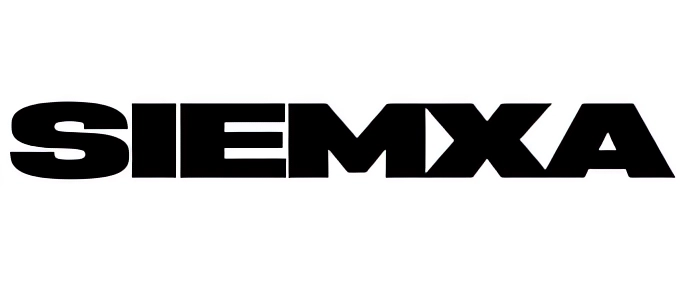In our mobile-driven era, “near me” searches account for nearly half of all Google queries—and they often lead directly to a store visit or a phone call. Yet many small and medium-sized business owners assume that local SEO requires a hefty marketing budget or the help of an expensive agency. The reality is quite different: with focus, consistency, and a handful of free or low-cost tools, you can significantly boost your local rankings and capture highly motivated customers.
In this guide, you’ll find 7 detailed, budget-friendly tactics you can implement right now to achieve local SEO on a shoestring. Each section includes step-by-step instructions, real-world examples, and suggested tools so that—even without an in-house SEO team—you can start seeing results within weeks.
Why Local SEO Matters for SMBs
1. High-Intent Traffic
When someone searches “best bakery near me,” they often have immediate purchase intent. Statistics show that 76% of local mobile searches result in a store visit within 24 hours, and 30% result in a purchase.¹
2. Cost Efficiency
Investing in paid ads can net short-term visibility, but local SEO delivers ongoing traffic with virtually no ongoing ad spend. By optimizing your own listings and website, you create a self-sustaining acquisition channel.
3. Community Trust
Rankings in Google’s Local Pack (the map and top three listings) convey social proof and credibility. Customers tend to trust businesses that appear in that prime real estate more than those paying for ads.
Quick Win:
Use Google Search Console (free) to filter your performance report by queries containing your city name. This shows your current baseline for geo-targeted terms.
Tactic 1: Google Business Profile Done Right
Your Google Business Profile (formerly Google My Business) is the single most influential local SEO factor.
- Verify Your Listing
- If you haven’t already, claim and verify your business. Google sends a postcard with a PIN—this small step unlocks all subsequent features.
- Choose the Optimal Categories
- Primary Category: Your main service (e.g., “Colombo Italian Restaurant”).
- Secondary Categories: Up to nine additional services (e.g., “Pizza Restaurant,” “Café”).
- Craft an Engaging, Keyword-Rich Description“Sunrise Café is a family-owned Colombo breakfast spot serving authentic Sri Lankan hoppers and premium artisan coffee.”
- Include your focus keyword (“local SEO on a shoestring” for context of our post) and at least one geo-modifier.
- Upload High-Quality Images
- Cover Photo: 1024×576 px, showing your storefront or signature dish.
- Interior & Exterior: Give customers a feel for your space.
- Team & Products: Humanize your brand.
- Use Google Posts Weekly
- Highlight new menu items, limited-time promotions, or community events.
- Posts remain live for seven days—set a calendar reminder to post regularly.
- Enable Messaging & Bookings
- Turn on “Messaging” so prospects can text you directly from the map.
- If applicable, integrate a booking link (e.g., OpenTable, Calendly).
- Monitor Insights
- Within GBP, track searches, views, and actions. Aim for at least 100 monthly views on your profile.
Tactic 2: On-Page Optimization for Local Intent
Your website must reinforce the local signals you’ve set up in GBP.
A. Title Tags & Meta Descriptions
- Title Tag Template:
<title>[Service] in [City] | [Business Name]</title>Example:<title>Auto Repair in Colombo | RapidFix Garage</title> - Meta Description Template:
<meta name="description" content="RapidFix Garage offers fast, affordable auto repairs in Colombo. Call us today for a free estimate!">
B. Header Tags (H1–H3)
Use location and service in your H1s and H2s:
<h1>Colombo’s Trusted Auto Repair Shop</h1>
<h2>Brake Repair Services Near Me</h2>
C. NAP Consistency & Schema Markup
Place your Name, Address, Phone in the site footer and contact page identically. Then add this JSON-LD snippet to your <head>:
<script type="application/ld+json">
{
"@context": "https://schema.org",
"@type": "LocalBusiness",
"name": "RapidFix Garage",
"image": "https://yourdomain.com/logo.png",
"address": {
"@type": "PostalAddress",
"streetAddress": "45 Galle Road",
"addressLocality": "Colombo",
"postalCode": "00500",
"addressCountry": "LK"
},
"telephone": "+94-11-789-0123",
"openingHours": ["Mo-Fr 08:00-18:00","Sa 08:00-13:00"]
}
</script>
D. Image Optimization
- Filename:
rapidfix-garage-colombo-workshop.jpg - Alt Text:
Front view of RapidFix Garage workshop in Colombo
E. Local Landing Pages
If you serve multiple areas, create a separate landing page for each city or neighborhood, each with unique content and its own metadata.
Tactic 3: Build & Manage Local Citations
Citations—mentions of your business name and NAP on other websites—build authority.
- Directory Listings
- Start with Google, Bing, Yelp, Foursquare, and Apple Maps.
- Then add niche directories relevant to your industry (e.g., TripAdvisor for hospitality).
- Consistency Tools
- Use Moz Local or Yext free scans to identify inconsistent or duplicate listings.
- Manually correct any discrepancies (e.g., “No. 45” vs. “45”).
- Local Chamber & Association Sites
- Joining your local chamber of commerce or professional associations often includes a free directory listing and backlink.
- Monitor with Alerts
- Set up Google Alerts for your business name to catch unclaimed mentions you can turn into official citations.
Tactic 4: Encourage & Respond to Customer Reviews
Reviews on Google, Facebook, and industry-specific sites both signal quality to Google and persuade shoppers.
A. Asking for Reviews
- Email Template:Subject: Thanks for Choosing [Business Name]!
Hi [Name],
Thank you for your recent visit. If you enjoyed your experience, would you mind leaving us a quick review on Google? It helps us grow and serve you better!
Leave a Review
Thanks,
[Your Name] - In-Store Signage:
- QR code linking directly to your Google review form.
B. Responding to Reviews
- Positive Review Response:Hi [Name], thanks for the kind words! We’re thrilled you enjoyed our service and look forward to seeing you again.
- Negative Review Triage:
- Acknowledge the issue.
- Offer to resolve offline (“Please DM us or call XXX-XXXX so we can make it right”).
- Follow up when resolved and request an updated review.
C. Review Velocity & Diversity
Aim for 5–10 new reviews per month across multiple platforms to show a steady stream of feedback and to diversify your signals.
Tactic 5: Create Hyper-Local Content
Content that focuses on your community not only attracts local readers but also targets geo-specific keywords.
- Event Roundups
- Example Title: “Top 8 Street Food Festivals in Colombo This Year”
- Include dates, map embeds, and personal tips.
- Spotlight Local Partners
- Interview a neighboring business owner and publish a Q&A.
- They’ll likely link back and share on social media.
- Customer Success Stories
- Case Study Format: Problem → Solution → Results.
- Use real numbers (“Increased foot traffic by 25% during festival weekend”).
- “Best of” Lists
- “5 Best Pet-Friendly Cafés in Galle” or “Top Family-Run Boutiques in Kandy.”
- Link to the businesses you feature—this often earns reciprocal links.
- SEO Tips for Local Content
- Use LSI terms like “[Neighborhood] + service” naturally.
- Keep posts between 1,000–1,500 words for depth.
- Embed a Google Map showing your location.
Tactic 6: Fast, Mobile-Friendly Experience
Mobile users form over 60% of local search traffic—slow sites lose visitors.
- Speed Audit
- Run Google PageSpeed Insights or GTmetrix.
- Prioritize fixes: image compression, minify CSS/JS, leverage browser caching.
- Responsive Design
- Ensure form fields and buttons are at least 44×44 px.
- Use a mobile menu that’s easily tappable.
- AMP (Optional)
- For blogs: Implement AMP to serve ultra-fast, stripped-down pages on mobile.
- Click-to-Call & Directions
- Make your phone number a clickable link:
<a href="tel:+94117890123">Call Us Now</a> - Include a “Get Directions” link to your Google Maps.
- Make your phone number a clickable link:
Tactic 7: Forge Local Backlinks on a Budget
Backlinks from reputable, locally-relevant sites are gold.
- Community Sponsorships
- Sponsor a local sports team, charity run, or school event ($50–$200).
- Obtain a link from the organizer’s sponsors page.
- Guest Post Exchanges
- Offer a 600-word, value-packed post to a non-competing local business in exchange for a link.
- Topic idea: “How to Keep Your Car Running Smoothly During Sri Lanka’s Monsoon Season.”
- Local Influencers & Bloggers
- Identify micro-influencers (1–5K followers) in your city.
- Offer a free product/service in exchange for a blog post or social mention linking back to your site.
- Local Press Releases
- For noteworthy events (grand opening, anniversary), distribute a release to local news sites and bloggers.
30-Day Local SEO Plan Checklist
| Week | Actions |
|---|---|
| Week 1 | Claim & verify GBP; choose categories; update NAP and schema; audit 5 major directories; implement title/meta updates |
| Week 2 | Add 10 high-quality photos; schedule 2 Google Posts; fix top 3 PageSpeed issues; add click-to-call links |
| Week 3 | Send review requests to past 20 customers; respond to all new reviews; publish hyper-local blog post; embed map and photos |
| Week 4 | Outreach: secure 2 sponsorship links; guest post on 1 partner blog; monitor rankings in GSC and local rank-tracker; iterate |
FAQs About Local SEO for Small Businesses
How long before I see improvements?
Most SMBs notice a rise in map-pack visibility within 8–12 weeks if tactics are applied consistently.
Do I need paid tools?
No—many free tools (Google Search Console, PageSpeed Insights, Ubersuggest’s free tier) cover the essentials. You can add paid tools later for automation.
What’s the difference between organic and local SEO?
Organic SEO targets broader, non-geographic terms on the main results page; local SEO focuses on proximity-based searches and map-pack features.
Conclusion & Next Steps
Implementing local SEO on a shoestring is entirely within reach for small and medium-sized businesses. By following these seven tactics—optimizing your Google Business Profile, reinforcing local signals on your website, building citations, engaging with customer reviews, creating community-focused content, ensuring a fast mobile experience, and earning local backlinks—you’ll steadily climb the local rankings and connect with customers right in your neighborhood.
Ready for personalized guidance? Contact us for a complimentary local SEO audit, and let our team help you fine-tune every detail of your strategy.

